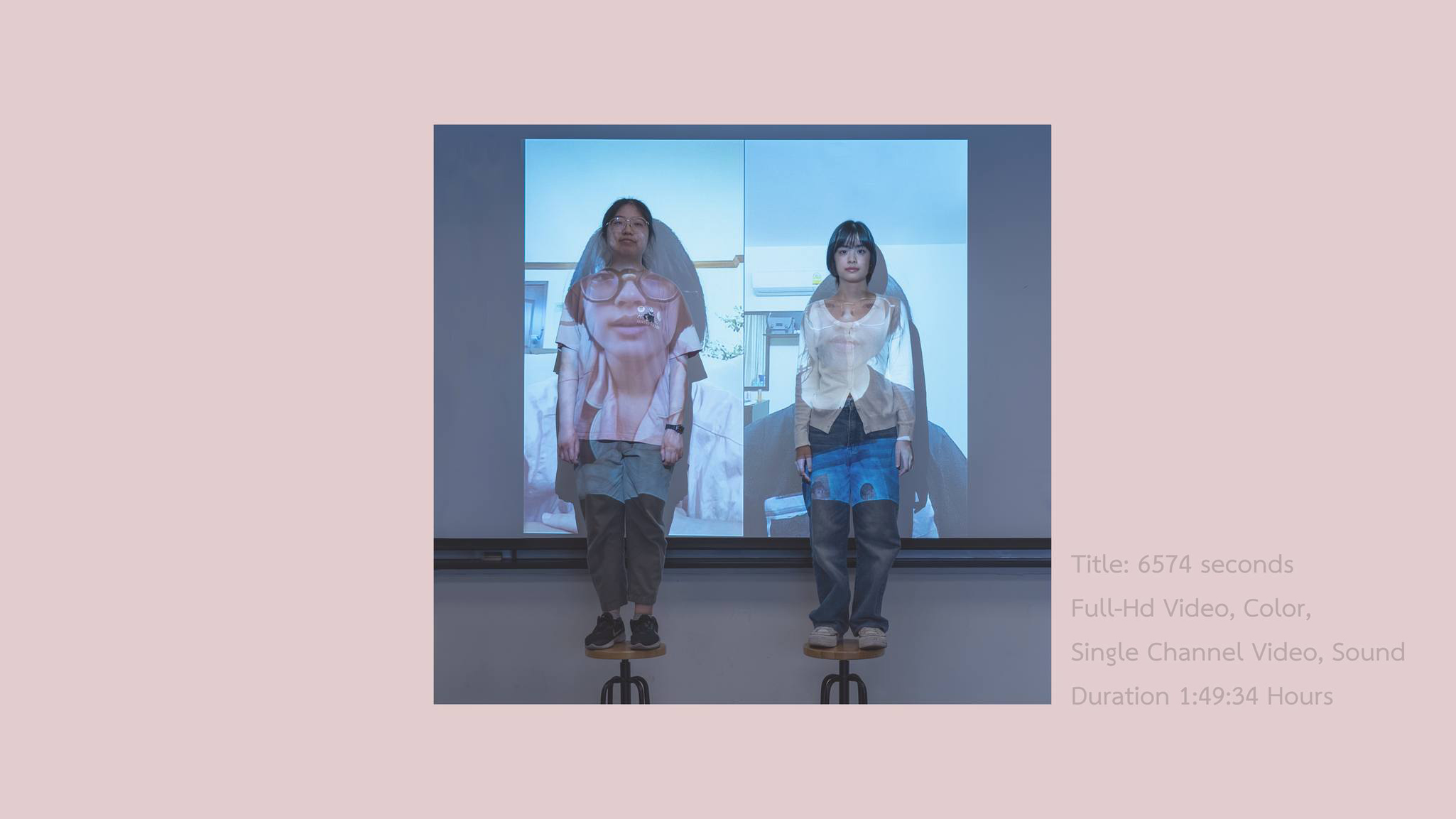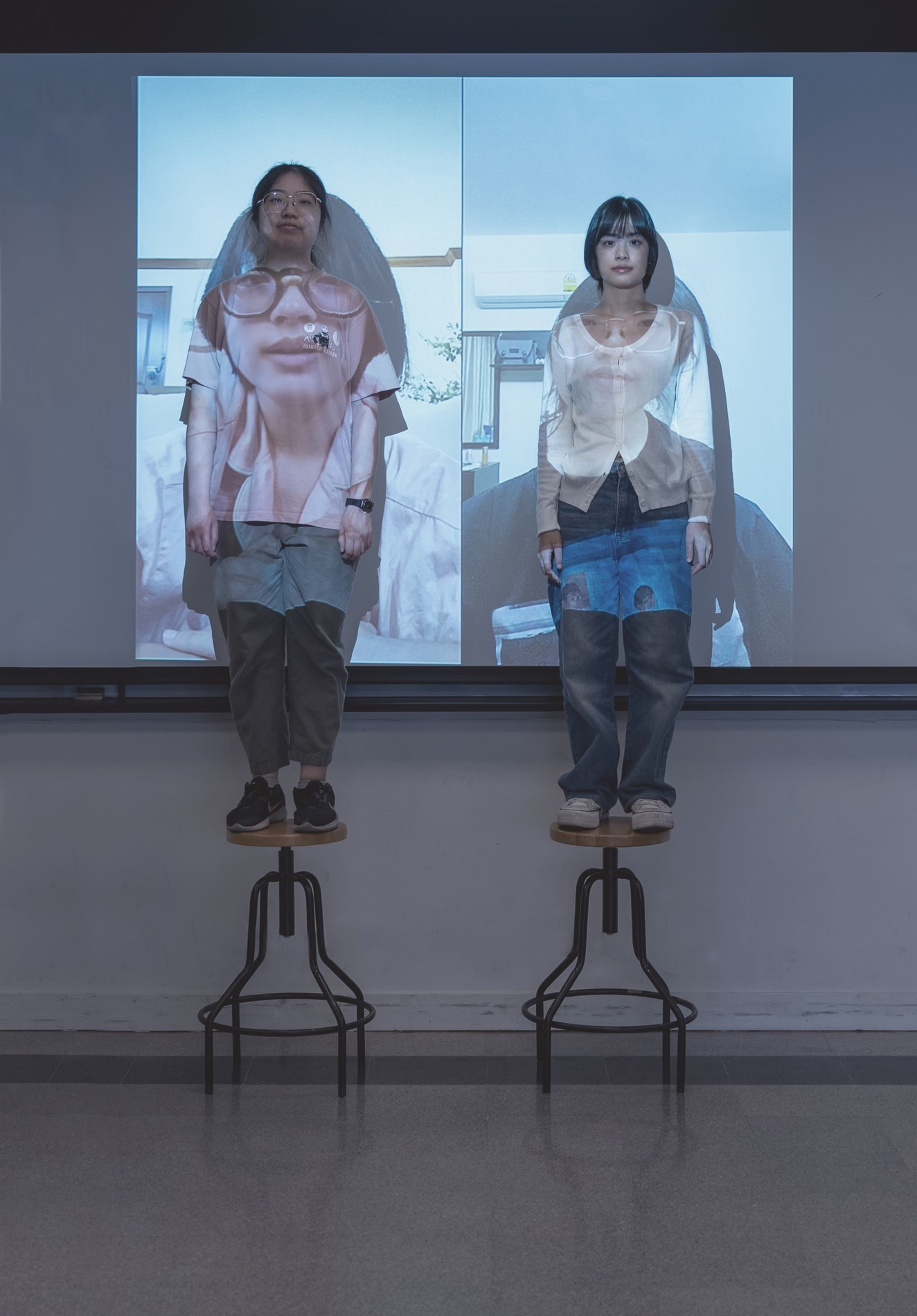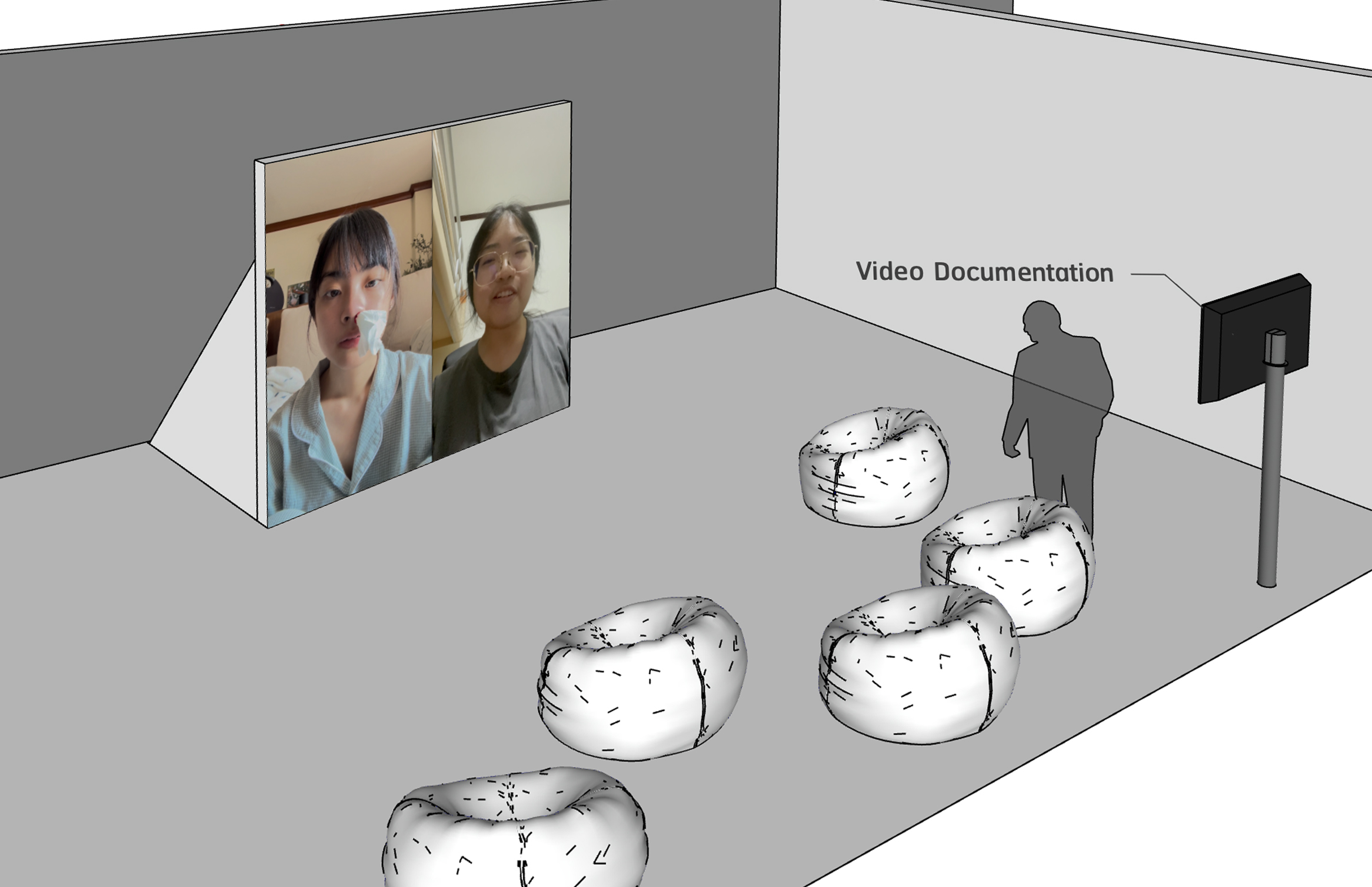
Faculty of Digital Art, Rangsit University
Asst. Prof. Anupong Charoenmitr




Abstract :
“6,574 Seconds” is a chronicle of time, born from the collaboration of artists and then-fourth-year students Chayada Kitbamrung and Nantawan Pongprasertsin. Together, they wove their memories into a continuous dialogue, recording and exchanging video messages—like whispers sent from the past to the future—over the course of 383 days, from June 18, 2023, to July 5, 2024.
This process serves as a reflection of emotions, the fragility of the mind, and the ebb and flow of feelings shaped by external stimuli. It reveals the intricate nature of relationships, intertwining friendship and familial bonds. Perspectives on the world emerge, shaped by individual experiences, while notions of happiness diverge, and aspirations extend both near and far.
This video becomes a mirror of memory, capturing transformation amid uncertainty. It poses questions about life’s pivotal moments—the transition from studenthood to adulthood—acting as an invitation for viewers to journey through these recorded echoes of the past and, in turn, explore their own evolving selves.
Objectives :
- To explore and convey ideas about personal and collective memory.
- To create an art space that allows the audience to interpret and reflect on the role of memory.
- To experiment with short video as a tool for capturing emotions and the fragility of the mind.
- To study methods of visual storytelling through video media that interact with the audience.
- To design the presentation of the work to communicate the concept effectively.
Conceptual Framework :
This project explores personal and collective memory through the process of exchanging and recording short video messages between two volunteers over 383 days. The work serves as an emotional archive, reflecting the fragility of the mind, the evolution of emotions, and the dynamics of relationships over time. The artists designed an artistic experiment where volunteers documented and shared their memories to create a space for connection and reinterpretation of past experiences. This process emphasizes the presence of emotions in the moment and the influence of the past on the present. The project’s outcome is presented through video art and installation, inviting viewers to reflect and explore their own transformations through the experiences of others.
Process / Methodology :
- Study theories of personal memory and collective memory.
- Research contemporary artists whose works explore the theme of memory.
- Design a process for recording memories through short video clips.
- Coordinate and seek collaboration from two volunteers.
- Conduct short video recordings, reaction videos, and interview recordings with the volunteers.
- Edit the final video artwork and interview footage.
- Design the installation of the artwork.
- Install and present the work to the public.
Techniques and Materials :
Multi channels, Color, Full HD Video, Sound, Duration 1 Hour 50 Minutes 50 Seconds, Loop, Dimension variables
Result / Conclusion :
- A deeper understanding of personal and collective memory: Exploring and conveying these ideas will lead to in-depth interpretation and analysis of the meaning and role of memory in individual lives and society.
- Development of new methods of artistic communication: Creating an art space that allows the audience to interpret and reflect on memory will foster new approaches in using art as a tool to discuss complex concepts and develop a diverse artistic language.
- Experimentation and research of new techniques in video use: Using short video to capture emotions and the fragility of the mind will enable research and the development of video techniques in art to reflect deep emotions and connect with the audience.
- Study and development of visual storytelling techniques: Using video media that interacts with the audience will enhance the knowledge in visual storytelling and the evolution of video art to create interactions with viewers.
- Designing effective presentations of artwork: Designing the presentation of the work to communicate the concept effectively will establish new standards in art presentation, using design techniques that attract attention and create an emotional impact on the audience.
References :
Artnet. (n.d.). Anri Sala. https://www.artnet.com/artists/anri-sala/
fionatan. (n.d.). BRIEF BIOGRAPHY. https://fionatan.nl/about/
Gibbons, J. (2007). In Contemporary Art and Memory. http://dx.doi.org/10.5040/9780755604012.005